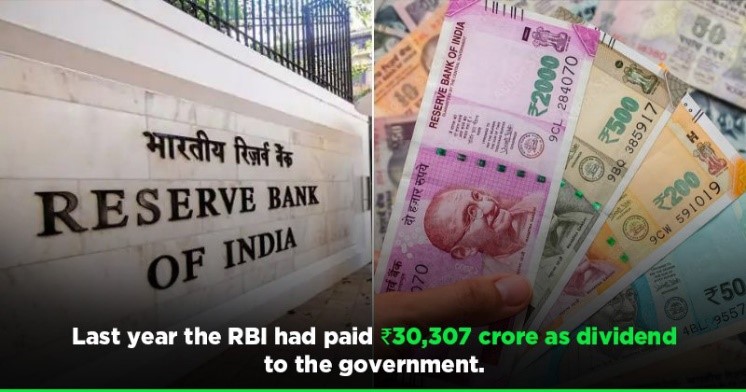Description

Disclaimer: Copyright infringement not intended.
Context
- The board of the Reserve Bank of India (RBI) approved a higher-than-expected dividend to the government in FY23 due to large dollar sales and low provisioning requirements.
Details
- The Reserve Bank of India board decided to nearly double its dividend to the government from official estimates due to revaluation gains and profits from selling dollars, which could help bridge the fiscal deficit.
Background
- The RBI pays dividends to the central government from the surplus income it earns on investments and valuation changes on its foreign exchange holdings, including dollar, and the fees it gets from printing currency notes. The dividends for fiscal 2022-23 will be paid in the current fiscal.
- The RBI generates its profits primarily from interest earned through the sale and purchase of government securities, lending to banks, and interest on bond holdings through open market operations. The surplus profit is calculated by subtracting operating expenditures and other costs stipulated in Section 47 of the RBI Act. It can be understood as the residual income earned after subtracting the expenditure component from the RBI's balance sheet.
- The RBI is obligated, as per Section 20 of the RBI Act 1934, to undertake receipts and payments for the Centre and conduct exchange, remittance, and other banking operations.
- Section 47 of the RBI Act requires the RBI to make provisions for bad debts, depreciation in assets, staff contributions, superannuation funds, and other expenses provided by bankers. The remaining profits are then paid to the central government.

The recent decision on Divided payout
- The decision on the dividend payment was taken in the 602nd meeting of the Central Board of Directors of RBI.
- The central bank also decided to maintain a Contingency Risk Buffer at 6 percent in line with recommendations of the Bimal Jalan Committee report.
- The panel had prescribed a Contingency Risk Buffer range of 6.5 percent to 5.5 percent. Contingency buffer is a specific provision made for meeting unexpected contingencies from exchange rate operations and monetary policy decisions.
- The board also reviewed the “global and domestic economic situation and associated challenges including the impact of current global geopolitical developments.
|
PRACTICE QUESTION
Q. Consider the following statements:
1. RBI has to maintain a Contingency Risk Buffer at 6 percent in line with recommendations of the Bimal Jalan Committee report.
2. Deposit Insurance and Credit Guarantee Corporation was established by RBI as one of its specialized divisions for the purpose of providing insurance of deposits and guaranteeing of credit facilities to all Indian banks.
Which of the above statements is/are true?
(a) Only 1
(b) Only 2
(c) Both 1 and 2
(d) Neither 1 nor 2
Correct Answer: C- Both 1 and 2
|
https://www.deccanherald.com/business/economy-business/rbi-approves-rs-87416-cr-dividend-payout-to-centre-for-2022-23-1220185.html













